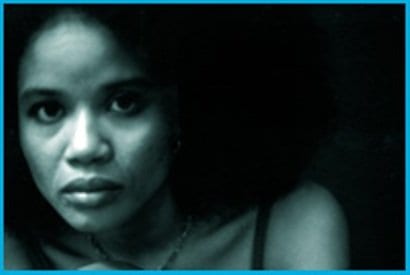Five years ago, ahdri zhina mandiela rented Theatre Passe Muraille’s backspace for three weeks of new theatre by black women. Though b current has focussed on black youth development over its 16-year history, mandiela created rock.paper.sistahz as a way to “engage audiences beyond the regular fronts.”
Engage us she did. The first two years saw the nurturing of folks like d’bi.young, Naila Keleta Mae, Ngozi Paul and Rhoma Spencer, all of whom have become influential emerging artists. Over the years, presentations have ranged from traditional theatre and performance poetry to stand-up comedy fusion and textless performance art.
“I needed a forum within the company where we could do some unconventional presentations of works, particularly by sisters,” says mandiela. “Shorts, experimentations, out-on-a-wire stylistic wrangling, where it wasn’t just productions as usual.”
This year’s anniversary lineup continues that tradition, while spreading into different media and locations. In addition to the standard new play development, there will be an art installation with music, presentations in association with the Toronto Festival Of Storytelling, film screenings and an evening dedicated to black women writers in publication. No longer limited to one tiny theatre, rock.paper expands across the city.
The list of participants reads like a who’s-who of black Toronto, but also embraces new and established voices from throughout Canada and beyond. Besides mandiela herself, artists include Dionne Brand, Nalo Hopkinson, Motion, M NourbeSe Philip, Alison Sealy-Smith, Djennie Laguerre, Nova Scotia’s Sylvia Hamilton, England’s Jan Blake and Jamaica’s Amina Blackwood-Meeks.
One especially thrilling international contributor is New York resident Staceyann Chin. A Jamaican with mixed black and Chinese ancestry, Chin is renowned for fast-paced slam poetry and one-woman shows. Though in her early 30s, she has the resumé of a senior artist. She’s the champion of numerous American poetry competitions and she’s widely published. Chin created three successful off-Broadway productions and copenned and performed in Broadway’s Tony-nominated Def Poetry Jam. Next year Scribner will publish her memoir.
Chin’s most recent play, Border/Clash, will be the finale for rock.paper.sistahs. Blending monologue and slam poetry, Chin delivers an autobiographical account of coming of age in Jamaica and the US.
After studying English literature and philosophy at the University Of The West Indies, Chin decided to relocate. “I moved [to Brooklyn] in 1997 to escape the terror of being gay in a violently homophobic society,” she says. In Jamaica, Chin was almost gang-raped by a group of students because of her lesbianism. But she is always conscious of simplistic comparisons.
“Parts of the United States are as homophobic as the worst parts of homophobia in Jamaica. There is more room to be gay [in the US] — the laws make sure of that. But there is much work to do. [America] likes to measure itself against other places and mark where they come up short. But Huntington, West Virginia could be as unsafe as Grants Pen, Jamaica.”
A major theme is her lack of fixed identity. “I was 24 years old. It was a large culture shock. For the most part, I had remarkable freedom to be an out lesbian, but I was for the first time being made aware of my blackness.”
Chin also feels uneasy with the classi-fications of the queer community: “I wouldn’t say I am femme. I might read as femme but I just am. I subscribe to little or none of the norms that are gender-driven.”
Despite Chin’s extensive travel, this is the first time Border/Clash has left New York. Chin will perform scaled-down excerpts from her off-Broadway production, as well as premiering some fresh ideas. “This is an unusual version. I wanted to do new work, so some of it will be very different from the show in New York.”
Chin’s writing is influenced by Shakespeare, TS Eliot, “the music of the King James version of the Bible” and her grandmother’s parables. The concept of family is in fact central for Chin. Her parents abandoned her at a very young age, and she was raised by her grandmother and other relatives.
“Everything I do dreams of living and loving in a family. My mother’s and father’s absence from my life informs so much of what I write.”

 Why you can trust Xtra
Why you can trust Xtra


